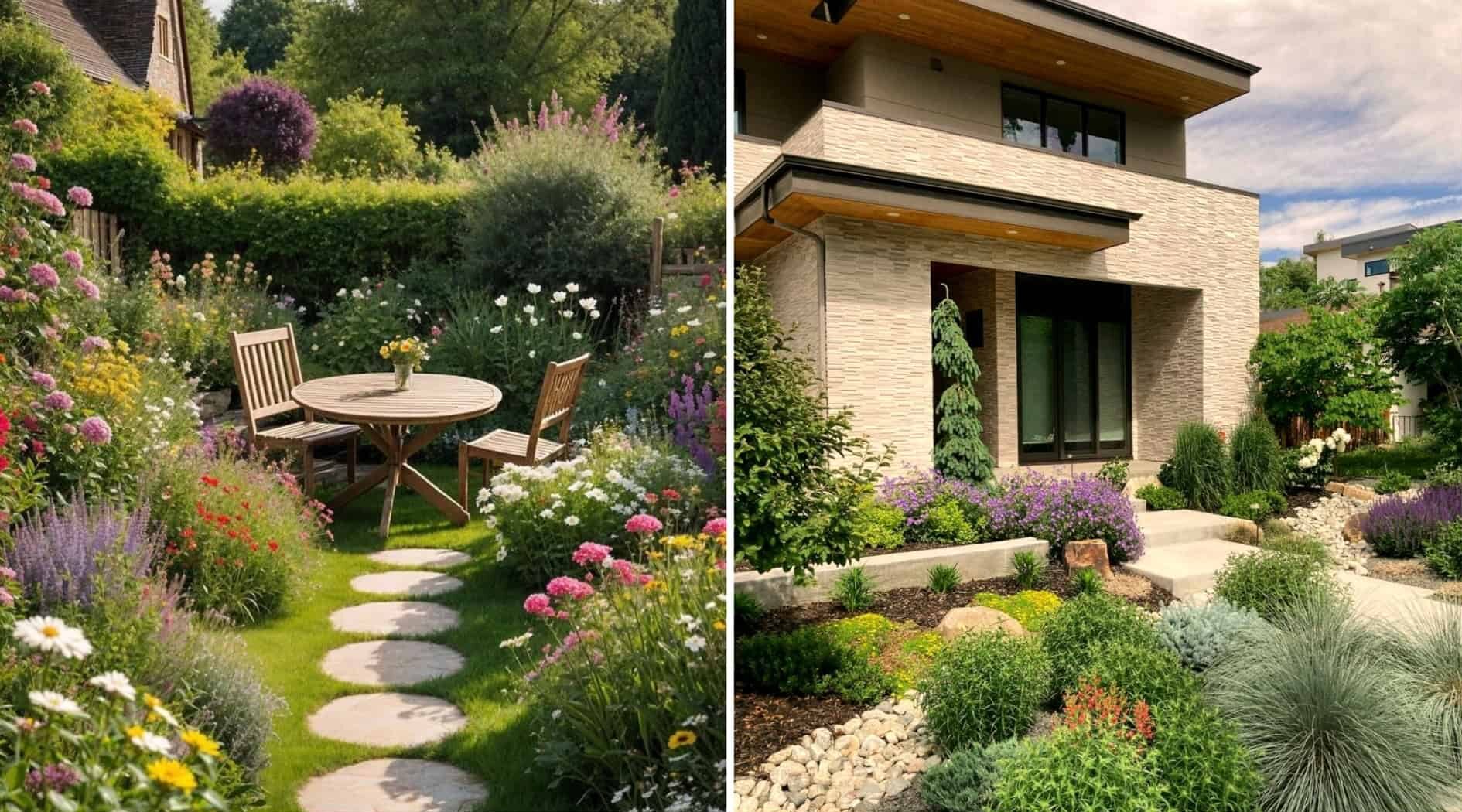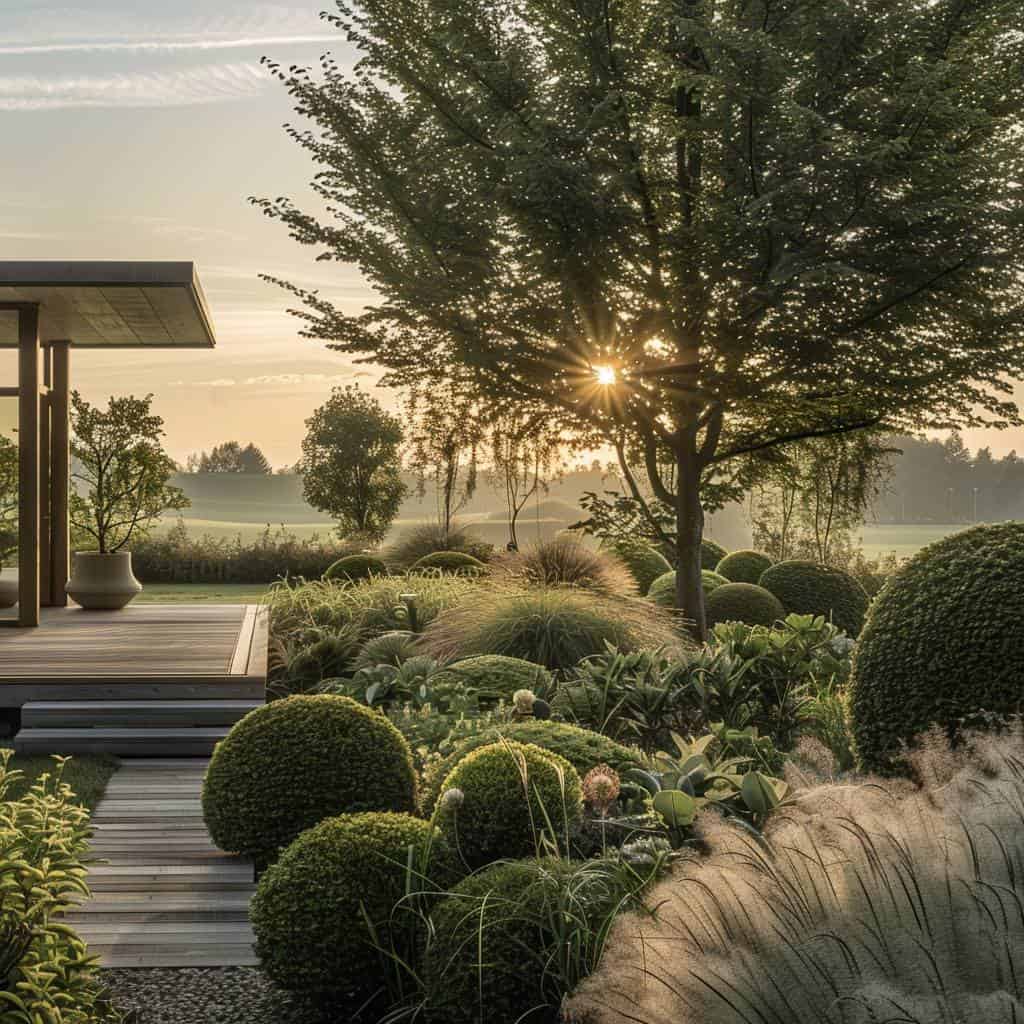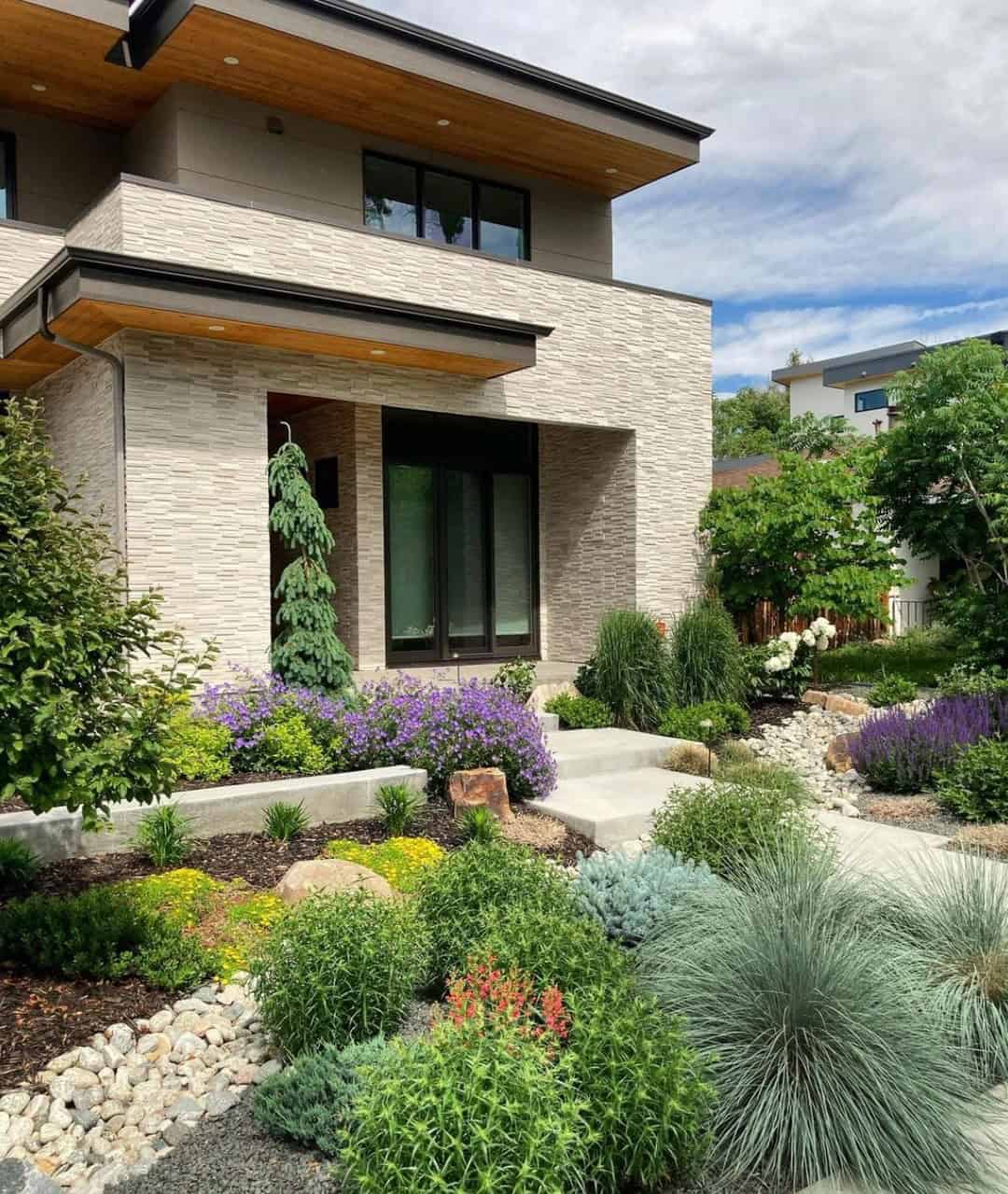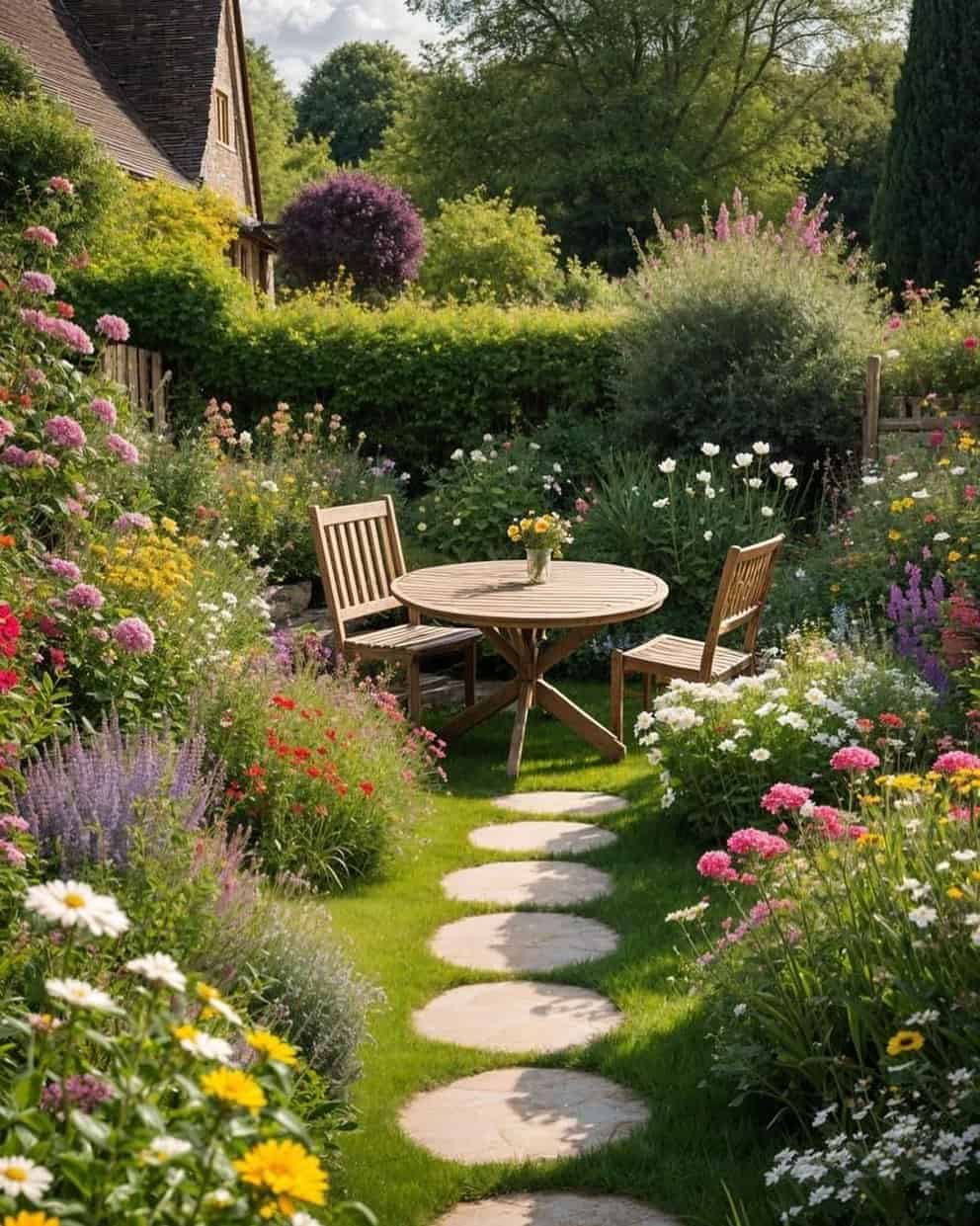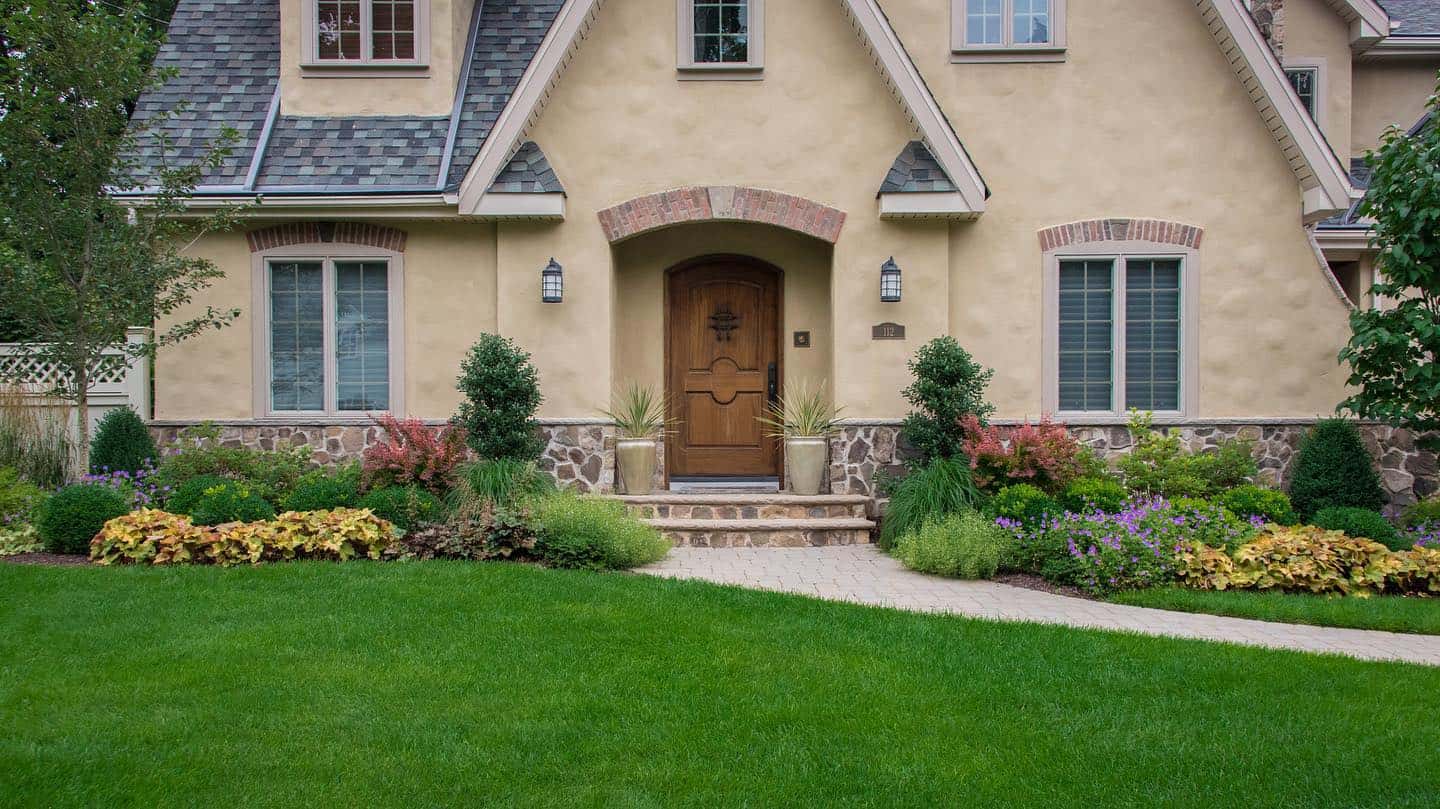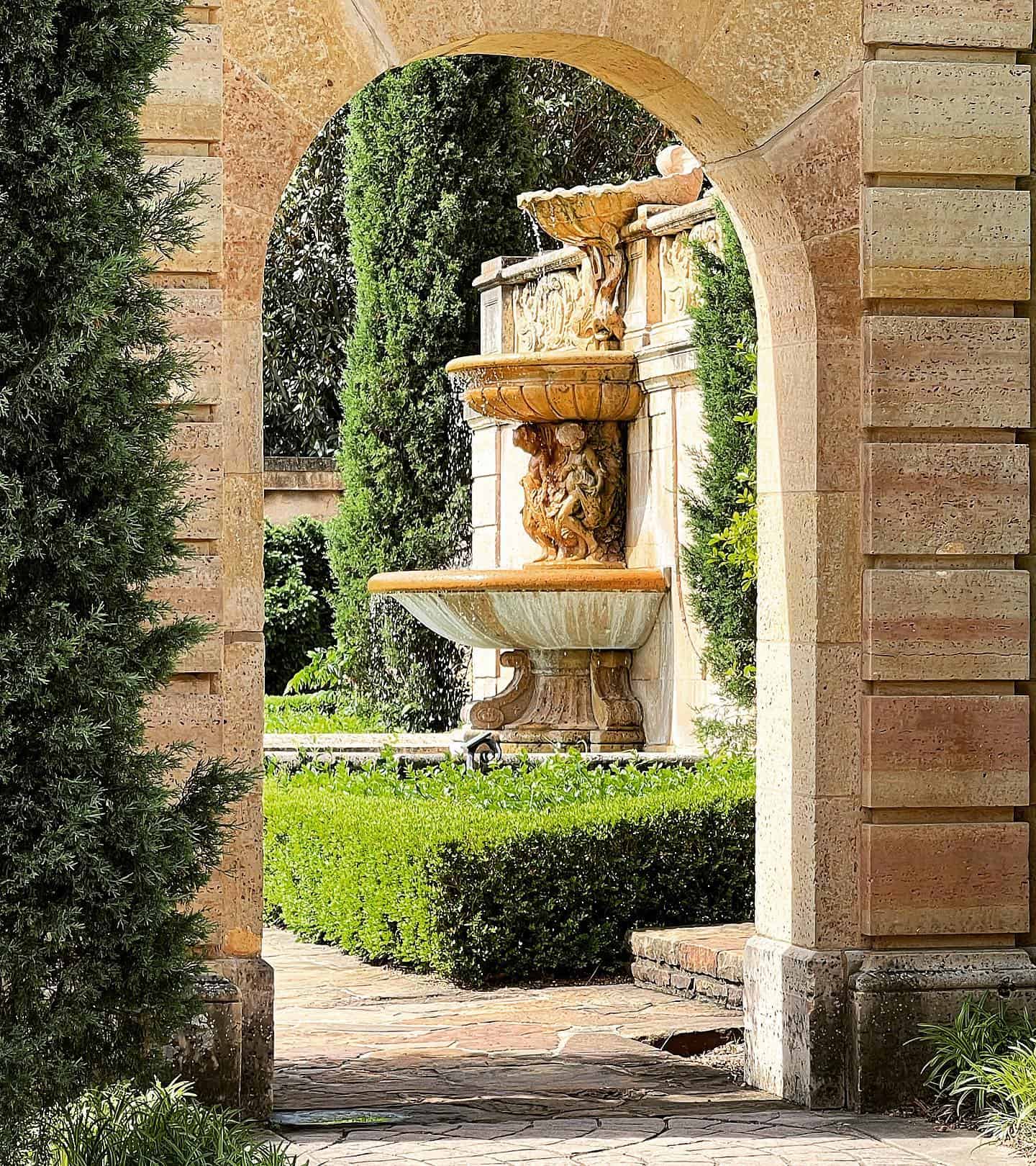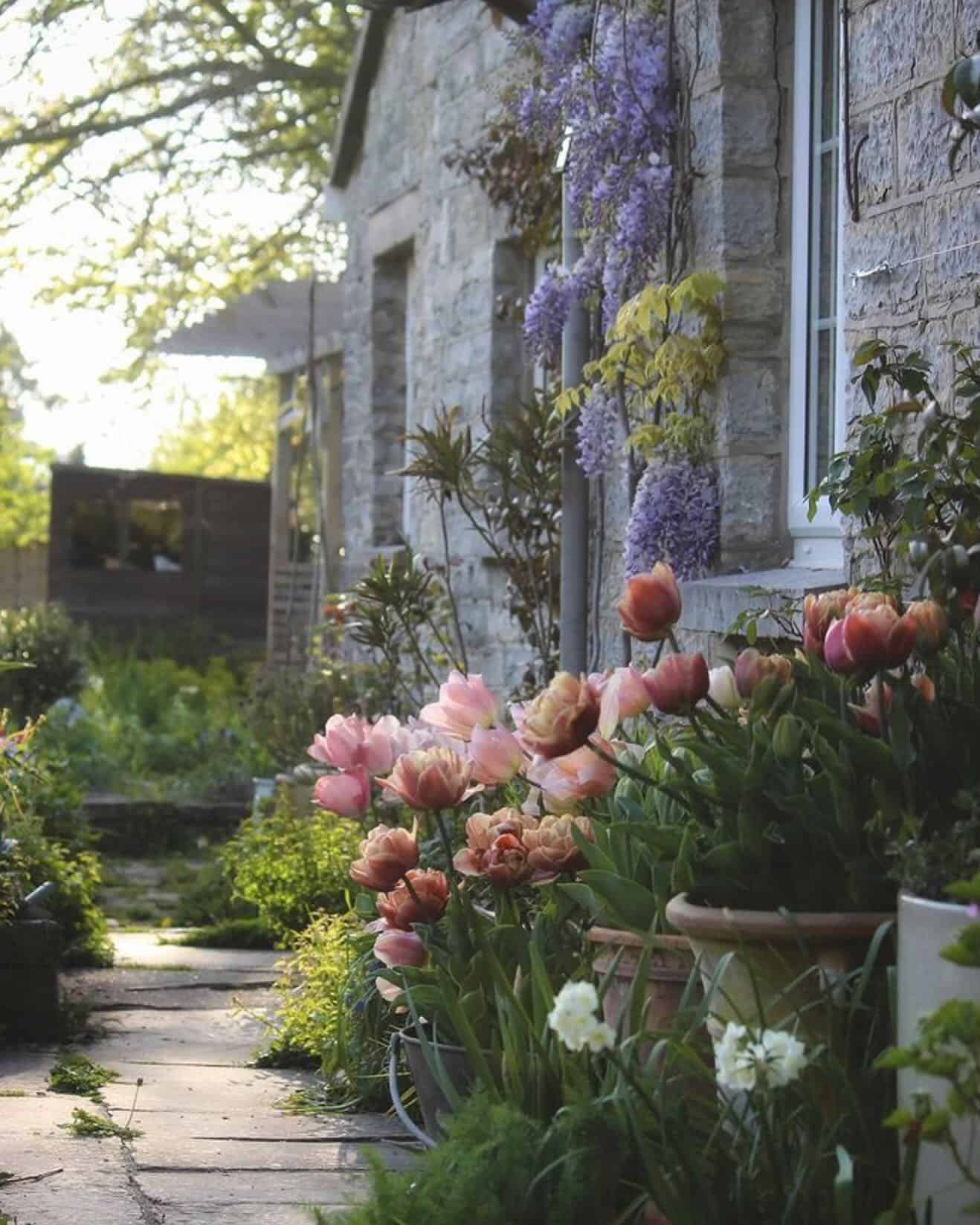At a time when humanity’s at the point where we try to be eco-conscious even about the fabrics we use for clothes and furniture, a sustainable garden is a natural choice.
You’d think that it requires a big change and investment, though the very opposite is the case.
If you go about it the correct way, you have a chance to lessen not only the amount you pollute but also the costs and the effort it takes to upkeep a regular garden.
Natural, eco-friendly gardens don’t require fertilizers or a lot of care, and all the while you’re able to save water and promote wildlife.
1. Prioritize Native Plants
Plants that are native to a certain area grow naturally and the soil itself provides them all they need to thrive.
This means that maintaining a native garden doesn’t require pesticides, fertilizers, or a lot of water. More often than not, these plants don’t even require human care.
They preserve biodiversity and are rarely invasive, and many of these plants naturally bloom yearly – meaning you won’t have to plant them again next season.
All in all, prioritizing native plants is beneficial to the wildlife that feeds on them, to the ecosystem, and even to your bank account.
2. Green Roof
A green roof is a new trend that is growing especially popular in urban areas. It’s low-maintenance, highly beneficial on multiple levels, and looks absolutely amazing!
There are a few important things to keep in mind as you venture to create your own roof garden.
First, the choice of plants is crucial. It’s best to go for native plants adapted to the climate, and also the kind of plants that can thrive in the weather conditions and direct sunlight.
When it comes to care, it’s important to remove weeds every now and again and fertilize the roof garden a few times a year.
A roof garden provides great insulation, it’s a haven for insects and birds, and may even prevent floods as it absorbs a lot of rainwater.
3. Xeriscaping – A Low Maintenance Bliss
Xeriscaping is what you call low-maintenance landscaping.
It means that you purposely prioritize the plants that require little to no care to thrive. Once more, I have to mention native plants, as they’re commonly self-sustained.
Xeriscaping leaves you with a beautiful eco-friendly garden while demanding basically no effort.
4. Let Nature Do the Gardening For You
While some of us prefer our garden orderly and cohesive, others don’t mind a little bit of nature’s mess.
Personally, I find natural gardens to be much more charming and appealing when maintained properly.
These gardens are also called bee or butterfly gardens since they serve as a food source for some of the most crucial insects in our ecosystem.
5. Minimize Your Lawn
You’d think that grass is a good thing as you venture into sustainable landscaping, right?
And that’s true, however, there are some oversized lawns out there that do nothing but waste water.
If you can, use a part of your lawn to plant a garden, and if it’s still too large, consider some of the eco-friendly hardscaping options.
6. Collect Rainwater
Reducing water pollution is one of the key parts of sustainable landscaping.
It’s recommended to implement a smart irrigation system or collect rainwater – it’s simple and free.
7. Pea Gravel And Other Permeable Hardscapes
A permeable hardscape is any kind of pavement that allows water to drain through, meaning it doesn’t ruin the soil underneath.
In the above picture, you can see pea gravel, but there are other types of permeable hardscapes such as permeable concrete, interlocking pavers, and loose gravel.
8. Prioritize Clay Pots
Clay pots are made from a durable natural material and for that reason alone they’re a more sustainable choice than plastic. They can last much longer and don’t pollute.
However, they’re also beneficial to plants on many levels. Clay pots are more breathable, they regulate moisture and temperature, and they’re not toxic.
Now, they are much heavier than plastic which affects your flexibility to rearrange your plants at will.
9. Use Mulch
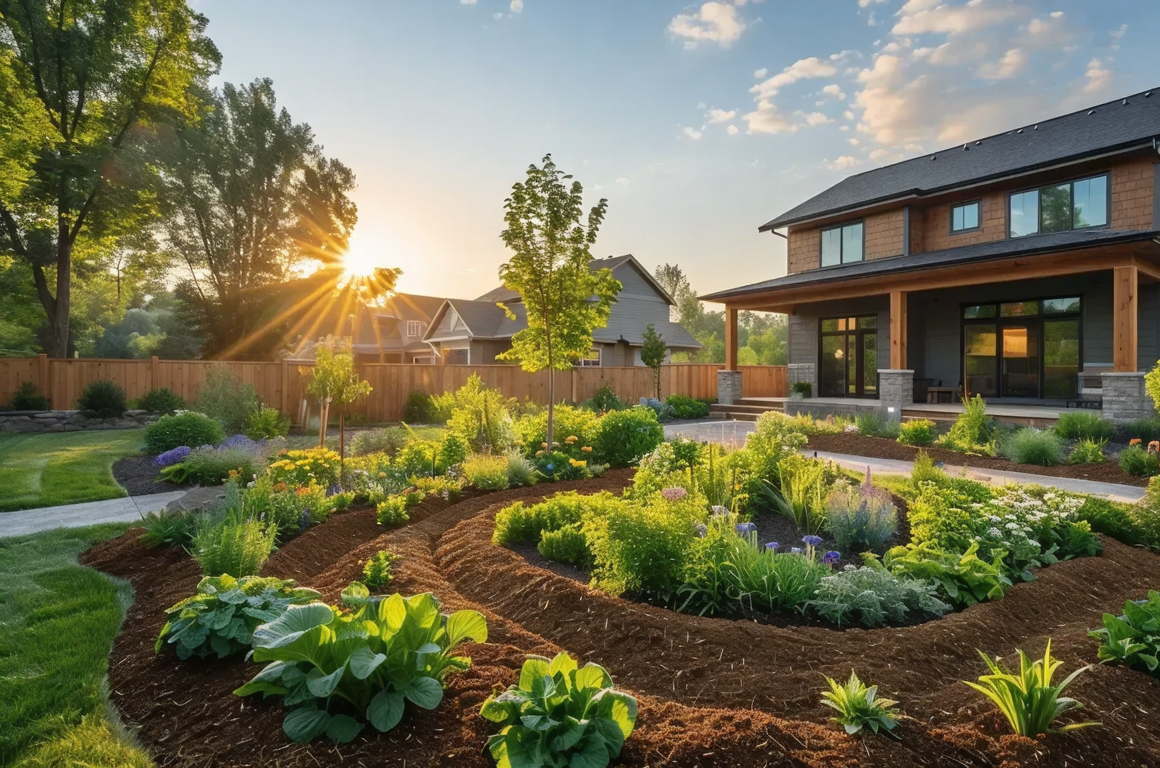
You have a choice of organic and inorganic mulch. And while the inorganic which contains chunks of gravel and plastic has its insulation benefits, the organic is always a better choice.
The organic mulch not only regulates the temperature of the soil, it feeds the soil, regulates the pH levels, and prevents erosion.
Both the organic and the inorganic mulch provide the garden with a cleaner, more even look.

